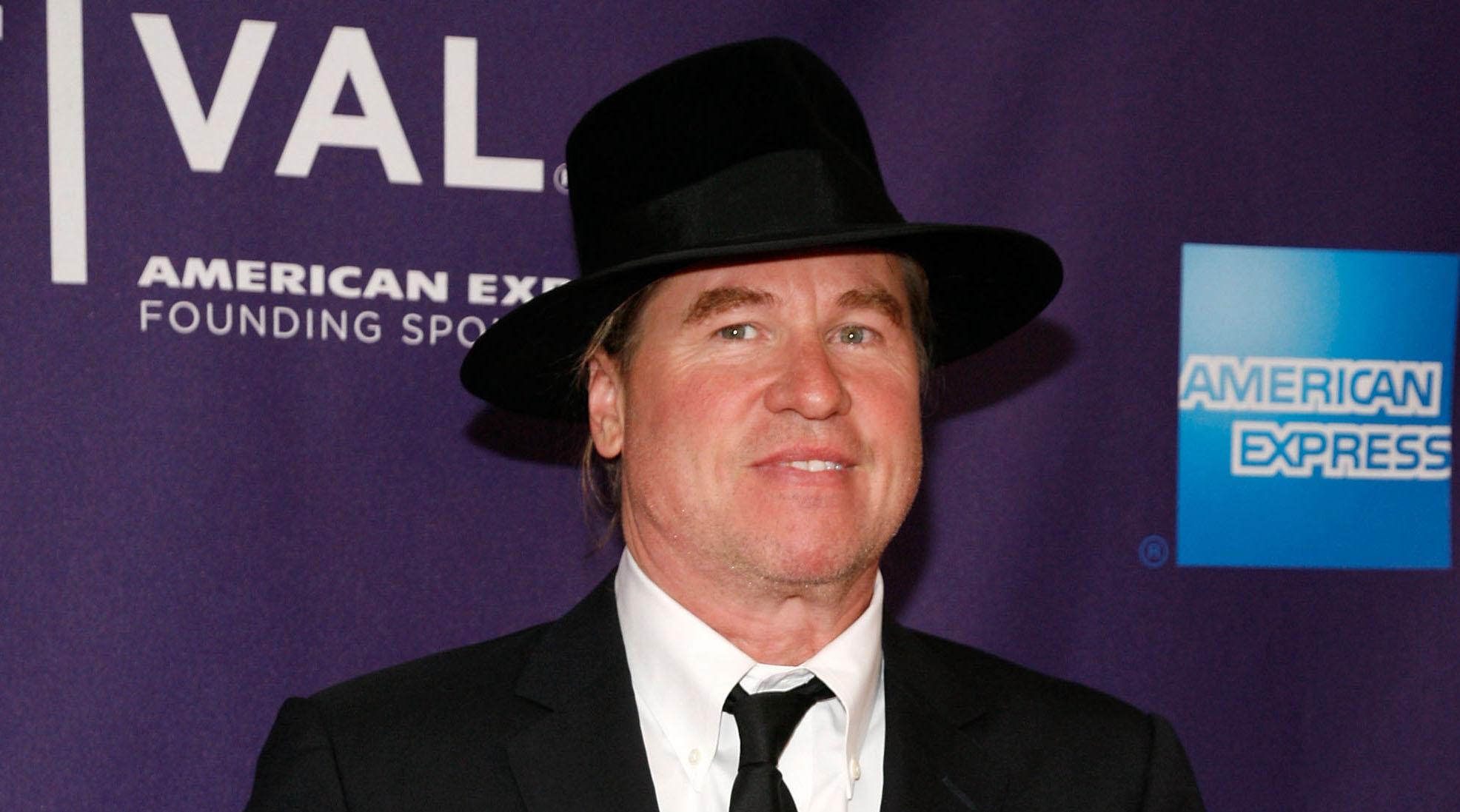Val Kilmer's Health Journey - A Look At His Public Story
Many people wonder about the life story of Val Kilmer, a person who has truly made a mark in films. It's a common thing, really, to be curious about those we see on screens, their paths, and the challenges they might face. There's a lot of talk, a lot of speculation, about his health and what he has gone through. This piece aims to shed some light on the public details of his journey, especially concerning his well-being, providing a clear picture of what has been shared.
You know, for someone who has spent so much time in the public eye, it's almost natural for folks to ask questions when things seem to change. His voice, for instance, is that something people have noticed. The way he speaks now is quite different from how it used to be, and this has, you know, sparked a lot of discussion among those who follow his career closely. We'll be exploring the reasons behind these changes, based on information that has been made available to everyone.
We often see famous individuals as larger than life, but they, too, face real-world struggles, just like anyone else. Val Kilmer's experience with a serious health issue is a powerful reminder of this very fact. His openness about his condition has, in a way, offered a glimpse into the personal strength it takes to confront such difficulties, and it gives us a chance to think about the broader topic of health and recovery for people in the public eye.
Table of Contents
- Val Kilmer - A Brief Life Story
- What Was Val Kilmer's Health Challenge?
- How Did Val Kilmer Face His Illness?
- The Impact on His Voice and How Did Val Kilmer Speak Afterwards?
- Living with Dissociative Identity Disorder - A Look at Complex Mental States
- How Do We Understand Dissociative Identity Disorder and How Did Val Kilmer Address Such Topics?
- Unraveling Misconceptions About Dissociative Identity Disorder and How Did Val Kilmer Help Clarify?
- Val Kilmer's Return to the Screen and His Enduring Spirit
Val Kilmer - A Brief Life Story
Val Kilmer, a name many recognize, has had quite a career in the entertainment world. Born in Los Angeles, California, he showed an early interest in acting. He actually attended the Hollywood Professional School and later the Juilliard School's Drama Division, which is a pretty big deal for anyone wanting to get into serious acting. His early work included theater, and he quickly made a name for himself with some interesting roles. You know, he really picked parts that let him show off a lot of different acting abilities.
His rise to fame came with roles that truly captured the attention of audiences globally. From action films to dramas, he had a knack for bringing characters to life in a way that was, you know, quite memorable. His performances often had a certain intensity, a sort of dedication that made them stand out. He worked with many well-known directors and actors, building a body of work that spans several decades. It's really something to see how much he has done over the years, more or less always keeping people interested in what he would do next.
Beyond his acting, Val Kilmer has also explored other creative pursuits, including art and writing. He's a person with many different talents, and his interests go beyond just what you see on the big screen. This really shows that he's a complex person, with a lot of different facets to his personality and his work. He's someone who, arguably, keeps finding new ways to express himself, which is pretty cool.
Personal Details and Bio Data of Val Kilmer
| Full Name | Val Edward Kilmer |
| Date of Birth | December 31, 1959 |
| Birthplace | Los Angeles, California, USA |
| Occupation | Actor, Artist, Author |
| Notable Roles | Iceman in Top Gun, Batman in Batman Forever, Doc Holliday in Tombstone |
| Education | Juilliard School's Drama Division |
| Children | Mercedes Kilmer, Jack Kilmer |
What Was Val Kilmer's Health Challenge?
For a while, there was a lot of quiet speculation about Val Kilmer's health. People noticed changes in his appearance and, you know, in his voice. It wasn't until later that he openly shared his personal battle. He revealed that he had been fighting throat cancer. This news, as a matter of fact, came as a surprise to many who had followed his career for so long, and it really brought a different kind of attention to his life.
His journey with cancer involved treatments like chemotherapy and radiation. These are pretty intense medical procedures, and they take a lot out of a person. He also underwent a tracheostomy, which is a procedure that creates an opening in the neck to help with breathing. This particular procedure had a significant impact on his ability to speak, which is something many people have noticed, of course, given his profession. It's a very serious thing to go through, and it really changed a lot for him.
Val Kilmer's openness about his health struggles has, in some respects, been quite inspiring. He could have chosen to keep it entirely private, but he decided to share his experience, which helps others understand the realities of such illnesses. His story highlights the strength needed to face such a serious health challenge, and it really shows his determination to keep living his life to the fullest, even with these changes.
How Did Val Kilmer Face His Illness?
Facing a serious illness like cancer is a deeply personal and often very difficult experience. Val Kilmer approached his fight with a spirit that many found quite remarkable. He relied on his faith, his family, and his creative pursuits as sources of comfort and strength. It's pretty clear that he found a lot of support in these areas, which helped him get through the tough times.
He talked about how his spiritual beliefs played a very important role in his healing process. For him, it wasn't just about the medical treatments, but also about a deeper, more personal journey. This kind of holistic approach to health, where one looks at the mind, body, and spirit, is something many people find helpful when dealing with serious conditions. He really showed that there are many ways to approach healing.
Despite the physical toll of his treatments, Val Kilmer continued to engage with his artistic passions. He kept painting and writing, using these activities as a way to express himself and, you know, to cope with what he was going through. This resilience, this determination to keep creating, is a powerful testament to his character. It shows that even when facing immense challenges, one can still find ways to pursue what brings them joy and meaning.
The Impact on His Voice and How Did Val Kilmer Speak Afterwards?
One of the most noticeable changes for Val Kilmer, due to his throat cancer and its treatments, has been the alteration of his voice. The tracheostomy, as we mentioned, had a direct impact on his vocal cords and his ability to speak as he once did. This is a pretty significant change for an actor, whose voice is such a key part of their craft. It's something that, naturally, drew a lot of public attention.
His voice now sounds different, often raspy or softer, and it can be a little harder to understand at times. However, he has embraced this change, finding new ways to communicate. He has used a voice box, a device that helps him produce sounds, and he has also worked with technology that can recreate his old voice using artificial intelligence. This is a pretty amazing development, allowing him to, you know, sort of regain a part of what he lost.
This adaptation really highlights his spirit of perseverance. Instead of letting the change define him negatively, he found innovative solutions to continue expressing himself. It's a powerful example of how one can adapt to very challenging circumstances and still, in a way, find their voice, even if it's a new one. His journey with his voice is a story of resilience and finding new paths forward, which is pretty inspiring, honestly.
Living with Dissociative Identity Disorder - A Look at Complex Mental States
While Val Kilmer's public health journey has focused on physical illness, it's also true that human well-being encompasses a wide range of experiences, including mental health. There are many different ways people cope with life's difficulties, and sometimes, those coping mechanisms can manifest as complex conditions. One such condition, which is often misunderstood, is Dissociative Identity Disorder, or DID. It's a mental health state where a person experiences two or more separate identities, or personality states, within themselves. This can be, you know, a very challenging thing to live with.
This condition, DID, can be a way for someone to, in a way, escape from very negative or traumatic experiences they've lived through. It's almost like the mind creates different compartments to deal with overwhelming pain or stress. Most people who live with DID have gone through very difficult and repeated trauma, especially during childhood. This could include physical or emotional harm, or growing up in a home where things were not stable. It's a very serious matter, and it speaks to the incredible ways the human mind tries to protect itself.
The most recognizable sign of DID is when a person's identity feels, you know, involuntarily split between these different personality states. One moment, they might be one "self," and then another "self" takes over. This can make daily life quite confusing and difficult, not just for the person experiencing it, but also for those around them. It's a rare condition, to be honest, and it often involves a disruption in how a person perceives their identity and reality. Understanding these complex mental states helps us appreciate the full scope of human experience and struggle.
How Do We Understand Dissociative Identity Disorder and How Did Val Kilmer Address Such Topics?
Understanding Dissociative Identity Disorder means looking past common ideas and focusing on solid information. It's a condition that, unfortunately, has been quite misunderstood over time, leading to a lot of incorrect beliefs. To truly grasp what DID is about, it's important to know that it's a real mental health condition, recognized by medical professionals, and it has specific characteristics. It's not, you know, just someone "acting" differently or having mood swings. It's a deep-seated way the mind copes with extreme stress, typically from very early life experiences.
The core of DID is the presence of distinct personality states that take turns controlling a person's behavior. This can lead to gaps in memory, where a person might not remember things they did or said when another identity was present. It's a very disorienting experience for them. Spreading accurate information about DID helps to reduce the negative feelings or judgments people might have about it. It allows for more compassion and, you know, better support for those who live with it. Val Kilmer, through his own public journey, has shown a willingness to talk about personal struggles, which, in a way, opens the door for broader conversations about all kinds of human challenges, including those related to mental well-being.
While Val Kilmer's personal story has been centered on his physical health battle, his public presence and willingness to share his journey can still connect with the broader topic of mental health awareness. When public figures speak openly about their struggles, whether physical or mental, it tends to make it easier for others to talk about their own experiences. This kind of openness helps to break down barriers and, you know, makes it more acceptable to seek help. It's about recognizing that everyone faces challenges, and there's strength in acknowledging them.
Unraveling Misconceptions About Dissociative Identity Disorder and How Did Val Kilmer Help Clarify?
A big part of understanding Dissociative Identity Disorder is, in fact, getting rid of the wrong ideas people often have about it. Many times, what people see in movies or on TV about DID isn't quite accurate, and that can lead to a lot of confusion and, you know, unfair judgments. For example, some might think it's about having "multiple personalities" in a dramatic, fictional way, rather than a genuine coping mechanism for severe trauma. It's really about helping people see the condition for what it is: a serious mental health challenge that needs proper understanding and support.
Real understanding comes from looking at the facts and listening to the experiences of those who live with DID. It's important to know that it's often a result of repeated, severe childhood trauma, and it's a way the mind tries to protect itself from overwhelming pain. It's not something a person chooses, and it's not a sign of weakness. Instead, it shows an incredible, albeit difficult, ability to survive extreme hardship. Val Kilmer, by sharing his own very personal health journey, has, in a way, contributed to a public conversation about personal struggles and resilience. While his experience is different from DID, his openness helps create a space where complex human experiences, including mental health conditions, can be discussed with more empathy and less judgment.
When someone like Val Kilmer shares their story, it helps to show that everyone has vulnerabilities, and that seeking help or openly discussing health challenges is a sign of strength. This kind of public sharing, even if it's about a different health issue, can still help to, you know, normalize conversations around all types of personal struggles. It encourages a more compassionate approach to understanding human conditions, whether they are physical or mental. It's about building a community where people feel supported in their health journeys, which is pretty important, really.
Val Kilmer's Return to the Screen and His Enduring Spirit
Despite the very serious health challenges he has faced, Val Kilmer has, in fact, made a return to the screen. This is a testament to his enduring passion for acting and his remarkable spirit. His appearance in recent films, particularly a highly anticipated sequel to one of his most famous movies, brought him back into the spotlight in a big way. It was a moment that many fans had been waiting for, and it truly showed his dedication to his craft, even with the changes to his voice.
His presence in these new projects has been met with a lot of warmth and appreciation from audiences globally. People are really happy to see him back, and they respect the effort he has put in to continue his work. The use of technology to help him speak in his role was a very innovative solution, allowing him to reprise a beloved character in a way that felt authentic and, you know, true to his legacy. It's a powerful example of how creativity and technology can come together to overcome obstacles.
Val Kilmer's journey is a powerful story of resilience, adaptation, and the enduring human spirit. He has shown that even when faced with significant personal battles, one can continue to pursue their passions and make a meaningful impact. His story, you know, serves as a reminder that life's challenges can be met with courage and determination, and that there are always new ways to find your voice, both literally and figuratively.

How Did Val Kilmer Get Throat Cancer? Did He Smoke? Details Below

Val Kilmer > ScreenCrush

Val Kilmer: Beyond The Mask – An Actor's Journey Through Triumph And